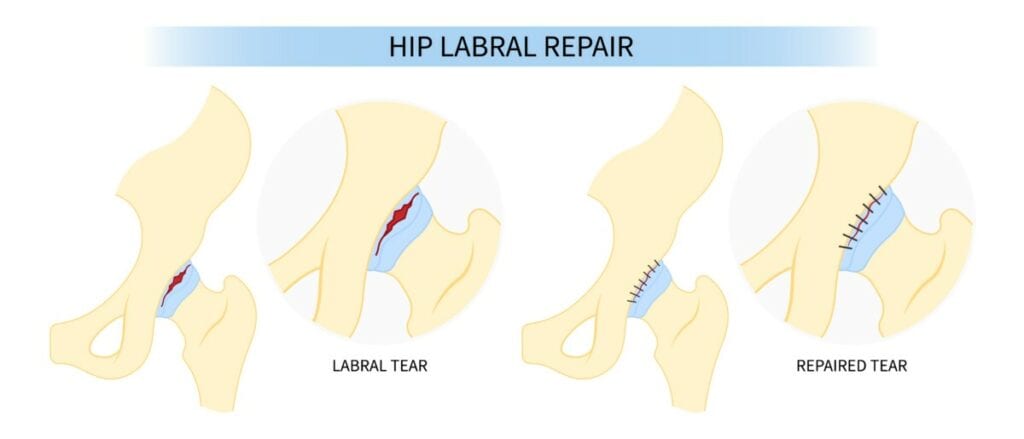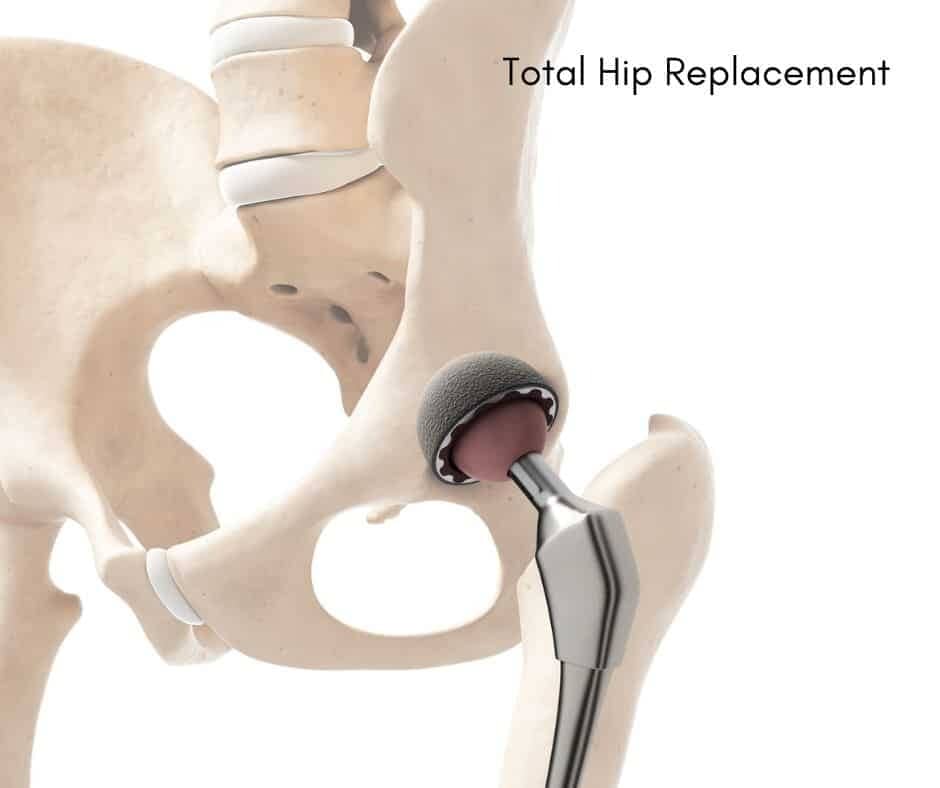Hip Labral Tear Surgery
- Best Asics Shoes for Flat Feet - October 25, 2024
- Best Running Shoes for Flat Feet - October 22, 2024
- Posterior Tibial Tendonitis - October 21, 2024
The labrum of the hip is a cartilage ring around the acetabulum, the hip joint socket in the pelvis. The femoral head is the round ball at the end of the thigh bone that sits in the socket.
The labrum deepens the hip socket and, therefore, has a significant role in keeping the femoral head in place while allowing for a large range of movement at the hip. A tear to the hip labrum can occur from an acute injury or chronic wear, usually associated with some specific hip shapes.
For example, the femoral head can be more oval than round, called a Cam lesion, or the socket, which can be too deep, is a Pincer lesion. These are very common, and most people are unaware if they have either of these hip shapes, but these are associated with an increased risk of hip impingement pain and labral tears.
Surgery
If the tear is large, complex or in a position that is likely to continue to cause problems for the individual, then surgery may be offered to repair the tear. Most labral hip tear surgery will be done arthroscopically (keyhole surgery).
Hip arthroscopy labral tear surgery causes less damage to the surrounding tissue and has a faster recovery rate than open surgery. Loose and damaged parts of the labrum may be removed, or areas may be sown together.
In some cases, tissues from other body parts can be used if exposed areas from the removed labrum are exposed. In cases caused by hip impingement linked to the shape of the femoral head or acetabulum, these may be surgically altered, such as by shaving the head of the femur to make it more spherical to fit the acetabular socket better.

Surgery Sucess Rate
Arthroscopic hip labral tear surgery is very successful, with studies showing a success rate of between 80-90%. This means that 10-20% of people still being in pain or have physical limitations after surgery or require further surgery.
Some factors are associated with better outcomes, such as younger patients, specifically those under 40 years old, doing better than older patients. Arthritis identified or confirmed during surgery predicted worse surgical outcomes (McCormick et al, 2012).
Many people can return to their previous sporting levels with the correct post-operative rehabilitation.
Recovery Time
Recovery from arthroscopic surgery for labral tear repair of the hip is typically around 4 months and up to 9 months for full recovery, including the return to high-impact sports. The time needed to recover from hip labral tear surgery will depend on the surgical technique, the damage in the hip, and the individual’s age, health, strength and fitness. Most cases are sent home on the same day as surgery.
Physical therapy with hip mobility should be started on the day of surgery. Movement can help the blood circulation of the leg, which is helpful for recovery and can also reduce the risk of blood clots, which are a risk following surgery.
Physical therapy can then build your strength and direct you in terms of what activities you should be doing in different phases of your recovery, improving your recovery rate.
For example, using a static bike early in your recovery (often from 2 weeks post-surgery) can be helpful, but your physical therapist may advise that you have an upright trunk and limit the resistance you use to protect the surgical site.
Hip labral tear surgery will require time off work for recovery. Many people can return to work within two weeks. However, if the individual’s job is more physical, they may need more time off.

Hip Labral Tear Surgery Scar
If surgery has been performed arthroscopically, the scars from hip labral tear surgery will be very small. There are usually 3 or 4 incisions around the hip, each about 1cm long. These can fade very quickly following surgery. If open surgery is necessary, this will involve a larger incision to the front or side of the hip and thigh. The scar is usually 8-12cm long, but it may be longer.
Pros and Cons of Hip Labral Tear Surgery
Pros
– Pain relief
– Increased range of movement
– Reduce the risk of further injury
– 80-90% success rate
– Low-risk surgical procedure
Cons
– Recovery time
– Cost of surgery and post-op care
– Surgery can be unsuccessful
– Risk of further tear if the protocol is not followed
– General surgical risks: blood clots, infection, nerve damage
Hip Replacement for Labral Tear
Depending on the specifics of the injury, age and health of the joint, as well as the patient’s age and their physical demands for their hip, hip replacement surgery may be recommended over labral tear repair surgery. If there is significant arthritic wear and tear to the joint surfaces along with a labral tear, this can be a good option to provide pain relief.
However, this surgery comes with limitations. Repetitive high-load activities can wear the prosthetic joint faster, so surgeons and physical therapists usually advise against lots of running, heavy weight lifting and competitive sports.
Related Article: Skiing After Hip Replacement

This is an interesting Hip Labral Tear Surgery Recovery Blog, written by Courtenay McFadden, about her personal journey. She is a 2x USA World Championship team member in Cyclocross and multiple top 5 finishers at Cyclocross Nationals and Pan American Championships and went through labral tear surgery twice.
Related Article:
Hip Labral Tear Exercises – Causes of lateral hip pain – Avascular Necrosis of the Hip
_______________________________________
We are specialists in Physiotherapy, with our clinic in Fulham, South West London.
We offer Online Appointments for £60 and Face-to-Face appointments for £85 in our clinics.
